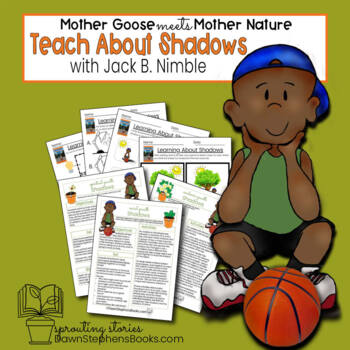worksheet on shadows "Teach About Shadows with Jack B. Nimble"
- PDF
- Easel Activity
Also included in
- Worksheet on shadows and other shadow activities are including in this bundle. You will get a matching shadows worksheet, a casting shadows worksheet, and other shadow activities preschool through first grade. ☀️✏️✂️The bundle includes a worksheet on shadows as well as lesson plans jot help you teach tPrice $9.50Original Price $11.00Save $1.50
- Are nursery rhymes poemsAre nursery rhymes poems? YES! and so much more!This complete set of the Mother Goose meets Mother Nature will give you a Nursery Rhyme study to do every month during the school year. You will get a printable guided reading book and a PowerPoint flip-book for each unique NursPrice $75.00Original Price $84.50Save $9.50
Description
There needs to be more than a worksheet on shadows to teach all about the science behind what makes a shadow. This creative teaching resource from Dawn Stephens Books LLC provides you with the tools to help your students grow spiritually, socially, and academically while teaching all about shadows.
☀️✏️✂️
The resource includes several types of shadow worksheets.
You will get a Match the Shadow worksheet,
a Casting Shadows Worksheet, and several other activities to do with your students.
You will find enough in this packet for several weeks of outdoor and indoor shadow activities.
The shadow activities from preschool through kindergarten will help students know where shadows come from and how they move and change when objects move closer and around a light source.
The activities are designed to go with the guided reading book of Jack B. Nimble Learns About Shadows.
You can purchase both items as a bundle here.
You will also love other "Mother Goose Meets Mother Nature" resources:
Jack and Jill Learn About Water
Humpty Dumpty Learns About Positions
Mary Learns About Animal Coverings
Little Miss Muffet Learns About Spiders
Mr. and Mrs. Sprat Learn About Foods
or purchase the bundle of all six books here.
Let's Connect








